July 25, 2022
Hair Count, Hair Width and Scalp Coverage are all Significantly Improved.
In 2021, a large multinational hair care corporation conducted an independent study on Phyllotex® related hair growth. Male and female participants with noticeably thinning hair took Phyllotex twice a day for nine months. Photographs and measurements were taken of participants’ scalps at the time they started taking Phyllotex and again at four, six and nine months. Key hair measurements were done at both a non-thinning (control) and a thinning location on each participant’s scalp. Results were analyzed to determine statistically significant changes in hair count, hair width, and Hair Mass Index (HMI).
We’ve broken down the results and some key concepts to highlight statistical proof of Phyllotex’s ability to regrow hair.
Results
Hair Count (Density)
Density, or hair count, is measured by counting how many visible hairs appear in one square millimeter. This data was collected from each participant and then averaged to reflect the collective average change in hair count of the participants.
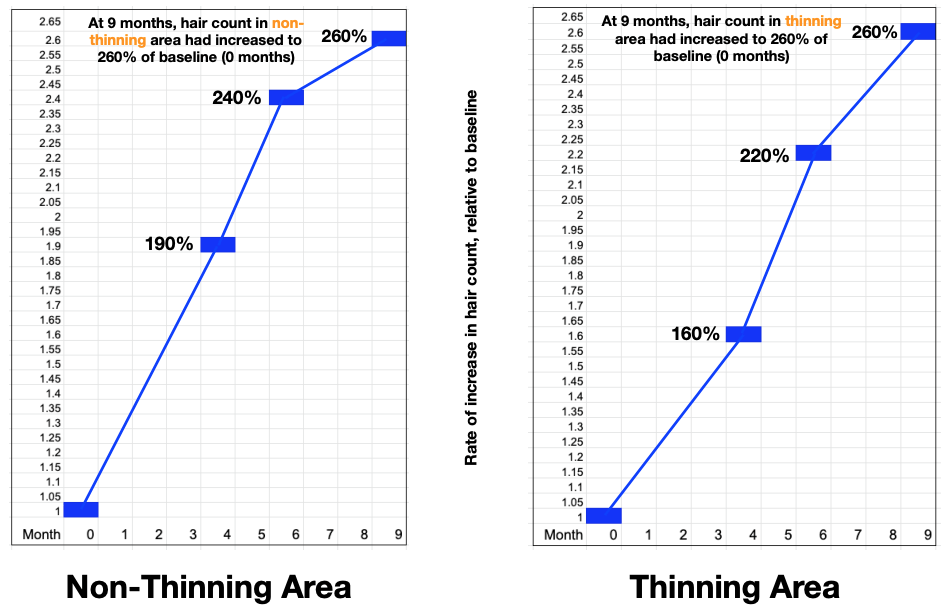
After four months of using Phyllotex, average hair count increased significantly in both non-thinning and thinning areas. Density increased an average of 190% at the non-thinning area and a 160% increase was found at the thinning area.
And, Men and women who took Phyllotex twice a day for nine months showed dramatic improvements in hair density: average hair count in both non-thinning and thinning areas increased by 260%.
Hair Width
Hair width is determined by measuring the thickness of individual hairs. Hair strands are measured in micrometers (m), one-millionth of a meter, because individual hairs are too thin to accurately measure by millimeter.
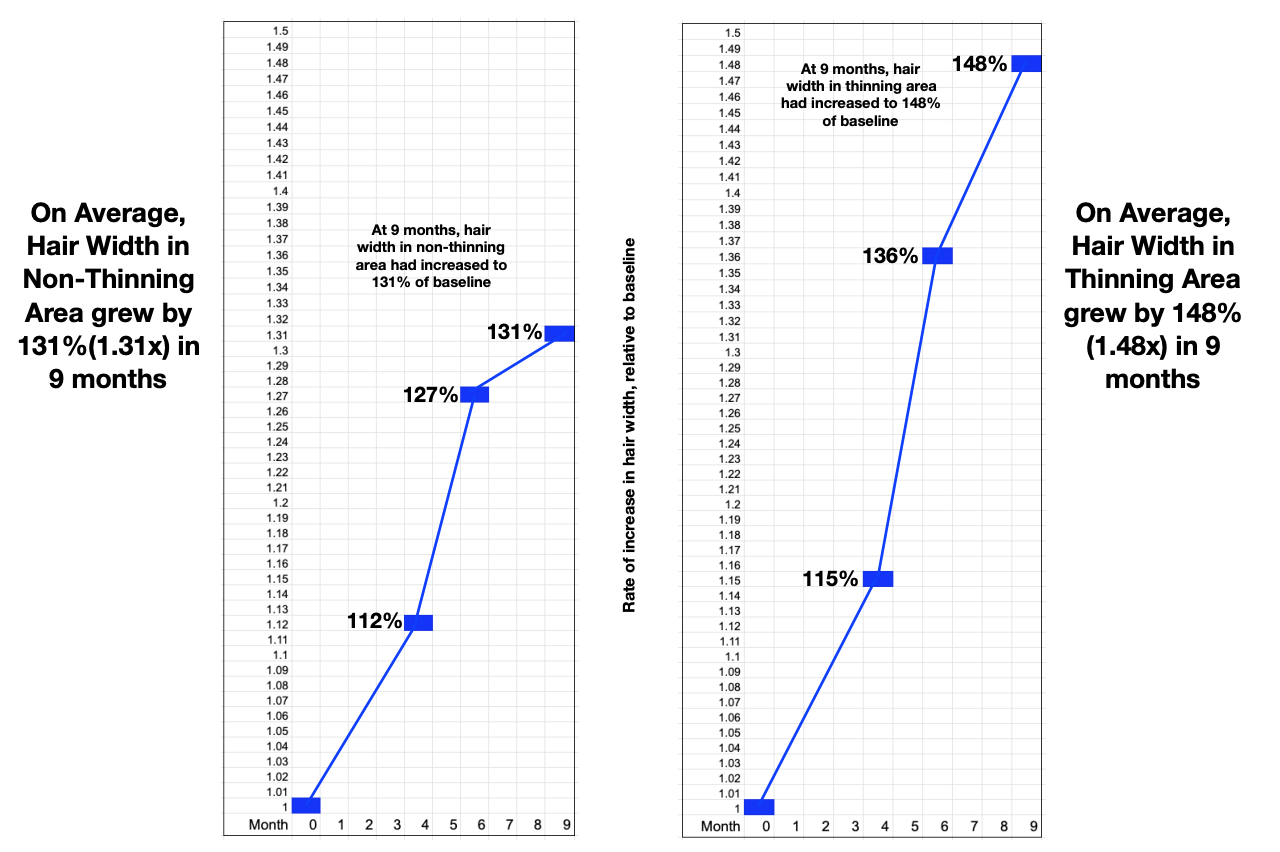
Participants’ hair was measured at zero, four, six, and nine months. Results show that a consistent regimen of Phyllotex® significantly increases hair width.
On average, hair width in thinning locations increased at a materially larger rate than in non-thinning locations.
Scalp Coverage & Hair Mass Index
This study showed that Phyllotex also has a massive effect on Scalp Coverage, or Hair Mass Index.
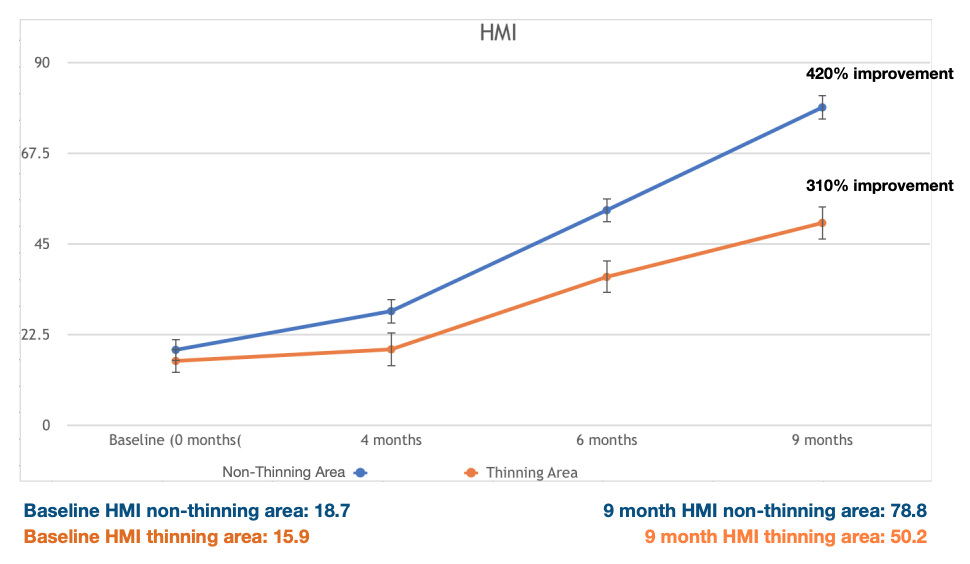
Men and women who took Phyllotex® experienced massive growth in HMI (Hair Mass index) in both thinning and control (non-thinning) areas.
The thinning location saw significant improvements in HMI: participants’ average HMI started at 15.9 in these areas. By 6 months the improvement was already very large (over 2x) and by 9 months it had increased to 50.2 – a growth of 310%.
Non-thinning areas also experienced dramatic results. At the start of the study, the average HMI in non-thinning areas was 18.7. By nine months the average had increased to 78.8, a dramatic 420% increase in scalp coverage. Improvement in the control / non-thinning area matters to users because thickening in areas that are already relatively healthy materially helps the overall look of the hair.
These two HMI results taken together show that Phyllotex® stokes huge regrowth in all areas of the scalp – not only where hairs are already healthy and thick and not only where hairs have miniaturized.
Understanding the Study and its Results
What is Hair Mass Index?
Hair Mass Index, or HMI, is a scalp coverage measurement developed by trichologists who specialize in hair loss. HMI helps trichologists track the rate of hair loss and regrowth and assess the effectiveness of hair loss reversal methods. Hair Mass Index is determined by combining the measurements of two factors: hair count and hair width.
Control vs. Thinning
Each participant’s scalp was measured in two areas: a “thinning” location with shrunken hair follicles where the hairs had miniaturized and a non-thinning “control” location materially less affected by hair loss.
Tracking growth in non-thinning areas also provides a qualitative basis for increased scalp coverage and aesthetic improvement. Hair growth in all areas makes for a fuller, healthier-looking head of hair. This is what people hope to achieve when starting a hair growth regimen.
Why Did Participants Take Phyllotex® Twice a Day?
This study tracked participants who took Phyllotex® twice a day, every day, for nine months.
Phyllotex® contains a proprietary, patented blend of vitamins, minerals, and herbs: vitamin D, pantothenic acid (vitamin B), magnesium, zinc, acai fruit, green coffee bean, pau d’arco bark, and olive leaf. These ingredients improve the health of each hair follicle, creating thicker, stronger, and longer hair from the root.
The nutrients in Phyllotex® are water-soluble. When Phyllotex® is ingested, vitamins, minerals, and herbs are absorbed and available for your body’s use for about 12 hours. After that, they are expelled as sweat and urine, taking the water-soluble ingredients with them.
So Phyllotex® is most effective when taken twice a day. Two servings ensure that your follicles have a constant supply of vital nutrients to help support healthy, robust regrowth
Learn more about Phyllotex at phyllotexhair.com.
Download a PDF of the study here.
Share This Post :

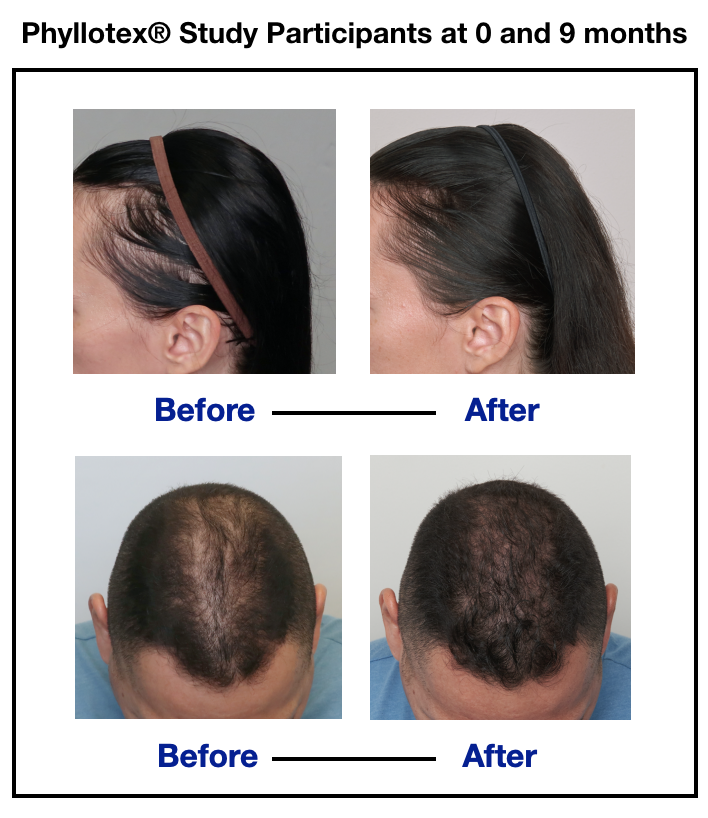
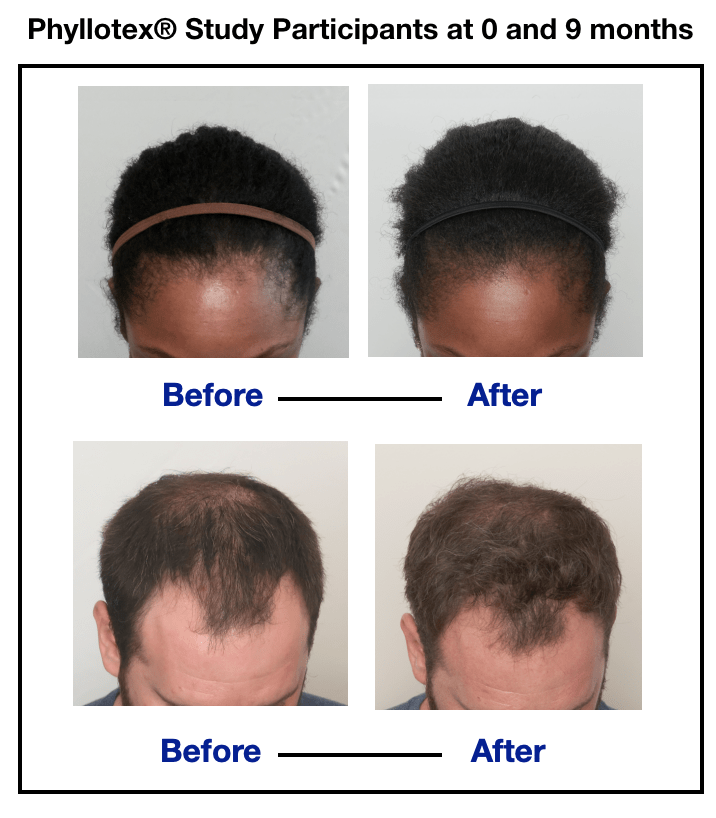
 844-749-5568
844-749-5568

